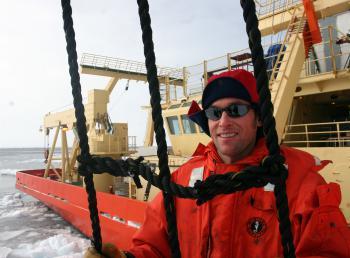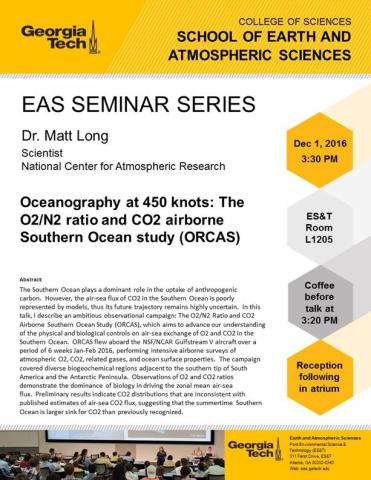event
SEMINAR: Oceanography at 450 knots
Primary tabs
Dr. Matt Long obtained a Ph.D. in Oceanography from Standford University in 2010 and is now a research scientist at the National Center for Atmospheric Research (NCAR) in Boulder, Colorado, USA
Visit Dr. Long Webpage
Research Interests:
- Modeling ocean ecosystems and biogeochemistry
- Interactions between ocean physics and biology
- Global carbon cycle
- Ocean tracers and stable isotope biogeochemistry
- Impacts of climate change on ecosystems and biogeochemistry
His talk will report on activites conducted under the project
o2/N2 ratio and CO2 airborne Southern Ocean study (ORCAS)
https://www.eol.ucar.edu/field_projects/orcas
ABSTRACT
The Southern Ocean plays a dominant role in the uptake of anthropogenic carbon. However, the air-sea flux of CO2 in the Southern Ocean is poorly represented by models, thus its future trajectory remains highly uncertain. In this talk, I describe an ambitious observational campaign: The O2/N2 Ratio and CO2 Airborne Southern Ocean Study (ORCAS), which aims to advance our understanding of the physical and biological controls on air-sea exchange of O2 and CO2 in the Southern Ocean. ORCAS flew aboard the NSF/NCAR Gulfstream V aircraft over a period of 6 weeks Jan-Feb 2016, performing intensive airborne surveys of atmospheric O2, CO2, related gases, and ocean surface properties. The campaign covered diverse biogeochemical regions adjacent to the southern tip of South America and the Antarctic Peninsula. Observations of O2 and CO2 ratios demonstrate the dominance of biology in driving the zonal mean air-sea flux. Preliminary results indicate CO2 distributions that are inconsistent with published estimates of air-sea CO2 flux, suggesting that the summertime Southern Ocean is larger sink for CO2 than previously recognized.
If you are interested in talking with Dr. Long, please contact Hollie Meyer (below).
Status
- Workflow status: Published
- Created by: Emanuele Di Lorenzo
- Created: 11/28/2016
- Modified By: Fletcher Moore
- Modified: 04/13/2017
Categories
Keywords
Target Audience


